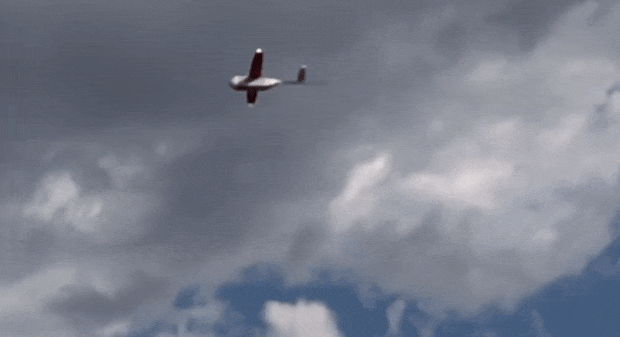Drone delivery is finally getting off the ground. And the action is happening in East Africa.
Zipline, a pioneering drone startup that began delivering blood packs to Rwanda’s remote hospitals in October 2016, today announced a major expansion into Tanzania. In early 2018 the company will begin flying its delivery drones to more than 1000 health care facilities around Tanzania, bringing urgently needed medicines and supplies to big hospitals and tiny rural clinics alike.
Keller Rinaudo, founder and CEO of Zipline, says that “the richest companies in the world” are still trying to figure out how to make instant drone delivery work as a commercial service (as IEEE Spectrumhas noted in it’s coverage of Google’s Project Wing and Amazon’s Prime Air). Meanwhile, the world’s first on-demand delivery service is already up and running in Rwanda.
“People expect that advanced robotics and AI are going to start in the United States and be built by rich white people,” Rinaudo says bluntly. Zipline’s East Africa projects defy that expectation, he says, and create a model of tech deployment that the United States and other nations can follow. “Rwanda and Tanzania are showing the world how to use robotic technology to save lives,” he says.
In Tanzania, the company is establishing four distribution centers with up to 30 fixed-wing drones each. Each distribution center will handle up to 500 delivery flights per day. The Tanzanian operation will expand on Zipline’s prior offering by delivering not only blood packs, but also vaccines, HIV medications, anti-malaria drugs, and critical medical supplies like sutures and IV tubes.
To place an order, a health care worker simply sends a text via the popular messaging service WhatsApp. Zipline’s local operators load a drone at the distribution center and launch it into the air, whereupon it autonomously navigates the route to its destination and typically arrives within 30 minutes. To save on battery life and prevent wear-and-tear, the drone doesn’t land; instead it drops its cargo by parachute and then heads back to the distribution center.
Rinaudo says his engineering team has recently made improvements to the drone fleet, working on aerodynamics and battery design to make drones that can fly farther, faster, and with heavier payloads. Another upgrade has to do with maintaining the drones in Africa’s harsh conditions: “We want to be able to swap parts of the vehicle very quickly, almost like Legos, so technicians can very quickly get it back online,” he says.
But Rinaudo says the biggest lesson his team learned in its early Rwanda operations is that “the technology is the easy part.” He ticks off the hard parts of operating an automated, drone-delivery system at national scale: making sure all regulatory issues are resolved; finding and training a local team to operate the distribution centers; spreading word to doctors and health care workers about the service; and communicating with people in towns and villages who see the drones whizzing overhead. “We want them to understand how this technology benefits them,” Rinaudo says.
When describing Zipline’s benefits, Rinaudo employs some convincing statistics and stories. In Rwanda, Zipline has flown 1,400 delivery flights since service began in October 2016. About 25 percent of those flights were emergency deliveries, where doctors didn’t have the blood product they needed for an ailing patient.
Rinaudo describes one case from Rwanda, in which a 24-year-old woman gave birth via C-section at a hospital. There were complications after the birth and the woman began to hemorrhage, so the doctors immediately gave her two packs of blood that matched her blood type. “But she bled out in 10 minutes,” Rinaudo says. “She was in real danger, and likely to lose her life.”
The doctors didn’t have any more packs of her blood type, so they placed an emergency order with Zipline. A procession of drones ended up delivering seven units of red blood cells, two units of plasma, and two units of platelets. “All of that was transfused into this woman—that’s more blood than you have in your body normally—and they stabilized her,” Rinaudo says. The team didn’t just save the woman’s life, he says, they also ensured that her child would have a mother. Not a bad day’s work for a couple of drones.
Eliza Strickland is a senior editor at IEEE Spectrum, where she covers AI, biomedical engineering, and other topics. She holds a master’s degree in journalism from Columbia University.





